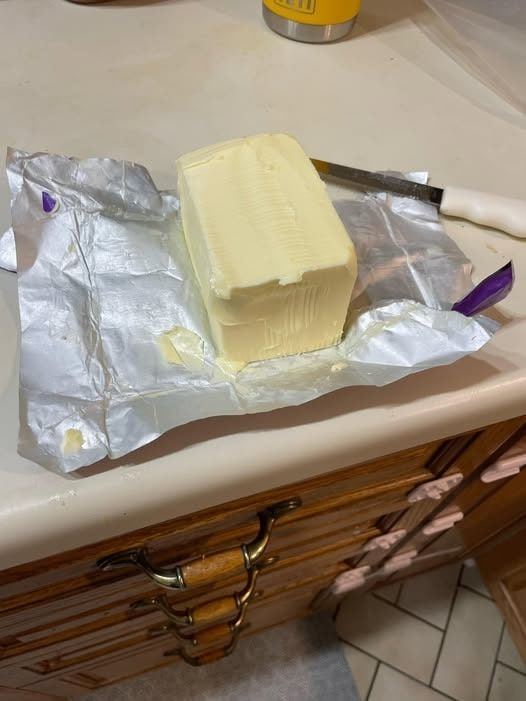Let’s settle one of the great kitchen debates.
You pull out the toast. Reach for the butter.
And there it is—your soft, golden stick, sitting proudly in a cute little dish like it’s been there all week.
But then… doubt creeps in.
“Wait—is this safe?”
“Isn’t dairy supposed to be refrigerated?”
“Could I be spreading bacteria… or worse, rancid butter?”
Cue the food safety panic.Groceries
Here’s the good news:
Yes, it’s generally safe to leave butter on the counter—if you do it wisely.
Butter isn’t like milk or chicken.
Its unique makeup makes it one of the few dairy products that can chill out (literally and figuratively) outside the fridge—for days, even weeks—with little risk.
Let’s clear up the confusion with facts, not fear.
Why Butter Can Survive (and Thrive) at Room Temperature
The secret lies in its science-backed simplicity:
High fat, low moisture: Butter is about 80% fat and only 15–18% water. Bacteria need moisture to grow—so butter’s dry environment naturally resists spoilage.
Salt is a preservative: Salted butter (most store-bought sticks) has added salt, which further inhibits microbial growth.
Acidity helps too: Cultured butter or European-style butters have a slightly acidic pH, making them less hospitable to bad bugs.
In short:
Butter doesn’t “go bad” the way other dairy does.
Instead, over time, it may become rancid—a flavor issue, not usually a safety one.
How Long Can Butter Sit Out Safely?
It depends on your kitchen—and how you store it.
Below 70°F (21°C), covered
see next page
Unsalted butter
Only
2–3 days max
(no salt = less protection)
Whipped butter
Not recommended (air + moisture = faster spoilage)
Pro tip: In summer or warm climates, play it safe and keep butter refrigerated. How to Store Butter on the Counter Safely
Want soft, spreadable butter without risking quality or safety? Follow these smart tips:
1. Use a Butter Dish with a Lid
Keeps dust, light, and flies away
Prevents odors from the kitchen (looking at you, onion soup)Kitchen supplies
Choose ceramic or opaque materials to block sunlight (UV speeds rancidity)
2. Try a Butter Bell (or Butter Crock)
This clever French invention uses water as a seal:
Fill the base with cold water
Place butter in the lid (bell-shaped cup)
Submerge the bell into the water—the airtight seal keeps butter fresh
Change water every 2–3 days
Works beautifully for 2–4 weeks if kept cool!
3. Keep It Cool & Dark
Store your butter away from:
Direct sunlight
Stove heat
Dishwashers or ovens
Humid spots (like above the sink)
A drawer or pantry shelf? Perfect.
When to Say Goodbye: Signs Your Butter Has Gone Bad
Even well-stored butter won’t last forever. Watch for these red flags:
Rancid smell – Sharp, sour, or “off” odor (not just creamy anymore)
Sour or bitter taste – Take a tiny lick. If it tastes “wrong,” toss it.
Discoloration – Yellow turning pale, greyish, or spotty
Mold – Fuzzy spots = definite discard (even if only on surface—butter can trap mold roots)
Note: A little darker color around edges? That’s oxidation—not harmful, but a sign it’s aging.
Speed Up Softening Without Risk
Need softened butter fast? Skip the microwave meltdown.
Try these safer methods:
NEXT PAGE
ADVERTISEMENT

